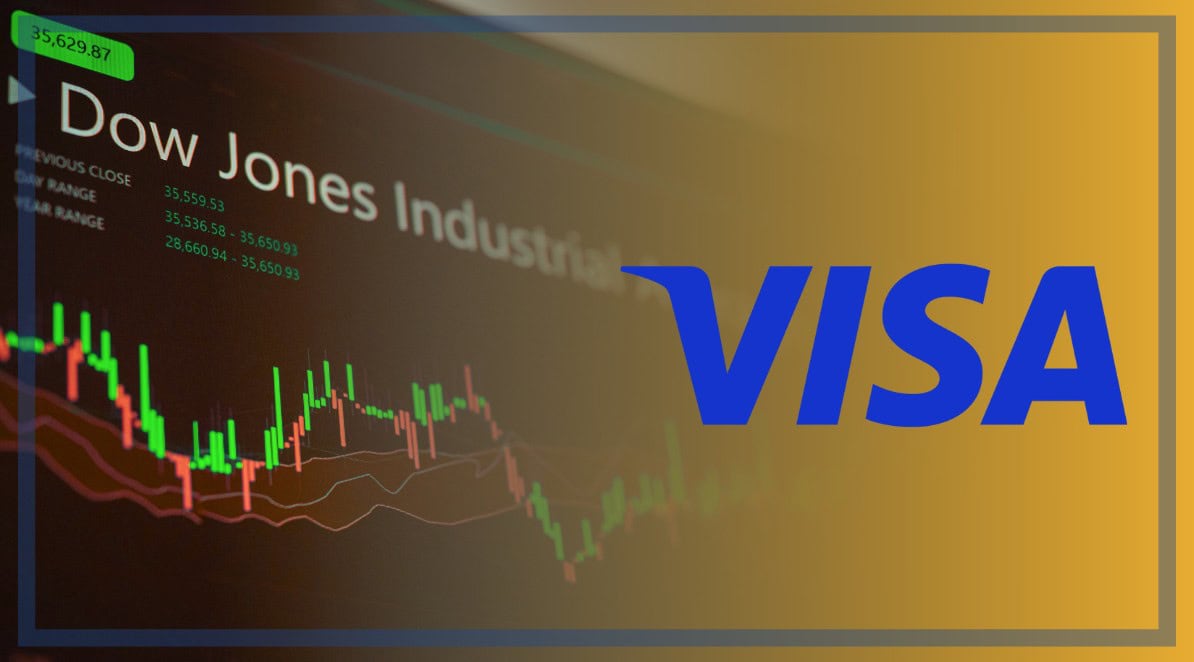IBM’s journey in the Dow Jones Industrial Average (DJIA) is a testament to the company’s knack for reinventing itself. From punch-card machines in the 1930s to leading AI and quantum computing today, IBM joined the index in 1932, left in 1939, and returned in 1979. Its 3.8% weighting now shows it still has big influence on the Dow Jones, proving it’s a tech pioneer that keeps redefining what ‘industrial’ means.
IBM’s ability to evolve has kept it vital through decades of change. It shifted from building mainframes in the 1960s to creating modern cloud systems that blend old and new technology. Its Watson system won “Jeopardy!” in 2011, showcasing early AI breakthroughs, and by 2025, IBM built a $6 billion business in advanced AI for enterprises. Banks are more frequently turning to IBM as a trusted partner for secure, regulation-friendly innovations, including technology that protects against future quantum computing risks.
Why IBM’s Place in the Dow Matters
The DJIA is a price-weighted gauge of just 30 stocks, so a single high-priced component can sway the headline index more than a low-priced giant. IBM’s inclusion therefore signals more than prestige; it affects how trillions of passive dollars track U.S. “industrial” vitality.
IBM’s Dow history is punctuated by three critical milestones. The company first joined the index on May 26, 1932, during the Great Depression, reflecting its early rise in electromechanical office equipment. It was later removed on March 4, 1939, as the index reshuffled components toward wartime manufacturers. IBM returned to the DJIA on June 29, 1979, replacing Chrysler and signalling the broader market’s recognition of technology’s central role in industrial progress.
The 1979 readmission of IBM to the DJIA was largely due to its leadership in office equipment. A sector that had been underrepresented in the index at the time. The System/360 mainframe, launched in the 1960s, positioned IBM as a leader in computing. The company’s innovations, like punch-card systems, electronic typewriters, and data processing technologies, were also a plus in securing its place in the index.
Today, IBM accounts for approximately 3.8% of the DJIA’s weighting.
How IBM Keeps Reinventing Itself
IBM’s transition from a hardware-centric company to a hybrid cloud and AI powerhouse has been methodical and calculated. In 2019, IBM acquired Red Hat for $34 billion. It was a key step that let IBM hook its older, in-house systems up to modern public cloud services using Red Hat’s OpenShift. The company has now evolved as a hybrid cloud integrator rather than a hyperscaler.
In 2023, IBM deepened its ambitions with the $4.6 billion acquisition of Apptio.
The launch of watsonx in 2023 marked IBM’s decisive pivot into enterprise-grade generative AI. The platform combines a studio for developing models, a data store for curating training sets, and a governance layer to ensure compliance — a trifecta designed for regulated industries. Since then, IBM has extended its Granite foundation model family with smaller, reasoning-optimized multimodal models. As of early 2025, CEO Arvind Krishna cites a $6 billion “book of business” in generative AI, doubling in just eight months.
Financially, software remains IBM’s growth engine, generating $7.9 billion in Q4 2024 and $6.3 billion in Q1 2025. Consulting revenues have been softer, reflecting a near-term dip (e.g., $4.9 billion in Q1 2025, down 3%) as IBM shifts from legacy projects to AI-oriented engagements.
IBM’s Strong Ties to Banking
IBM’s prominence in the banking sector is reinforced by a series of in-depth conversations featured on Disruption Banking. Michael Conway, IBM’s UK Consulting lead, emphasizes that only around 8% of banks have a firmwide generative AI strategy in place. IBM’s response has been to help some financial institutions establish Centres of Excellence.
Conway in an earlier discussion shared that IBM was already advising financial institutions on the risk-managed deployment of large language models before ChatGPT brought generative AI into mainstream discourse.
In 2025, GenAI is at the heart of a new technological frontier, and financial institutions that adopt it have the potential to outperform rivals in a large swathe of areas
— #DisruptionBanking (@DisruptionBank) May 1, 2025
We spoke to @IBM to find out more #artificialintelligence #banking #GenAIhttps://t.co/y2Pg1Ler3n pic.twitter.com/c3umabN8Sh
Prashant Jajodia, Financial Services Sector Leader at IBM Consulting, highlighted how watsonx.governance integrates with Promontory’s compliance expertise, enabling IBM to offer banks regulatory-ready AI platforms. This combination of deep tech and regulatory acumen makes IBM uniquely suited for what Jajodia calls “chapter-three” digital transformation — where AI is no longer experimental, but mission-critical.
These strategic insights are matched by real-world deployments. NatWest’s conversational AI assistant, Cora+, is now powered by watsonx, embedding generative capabilities into everyday customer interactions. Meanwhile, BNP Paribas renewed a decade-long cloud partnership with IBM in April 2025, citing the embedded risk controls and compliance features of IBM’s Financial Services Cloud as decisive advantages. This platform (IBM’s Financial Services Cloud) is a first-of-its-kind public cloud for financial institutions, designed for security and compliance.
In the field of quantum computing, IBM is also laying the groundwork for post-quantum security in banking. Its z16 mainframe already supports NIST finalist algorithms such as CRYSTALS-Kyber and Dilithium, offering early protection against quantum-era threats. As reported in a Disruption Banking feature from 2024, IBM is leading industry efforts through organizations like the GSMA and banking task forces, alongside other industry players, to pre-emptively upgrade critical infrastructure for quantum resistance.
In March this year the Monetary Authority of Singapore (MAS) cautioned financial institutions on the cybersecurity vulnerabilities introduced by the advent of quantum computing#Quantum #QuantumSafe #CyberSecurity #IBM #Cryptography #Taskforce #PQC #Qiskithttps://t.co/sD58kn0Dy9 pic.twitter.com/ZbRzfaeUaf
— #DisruptionBanking (@DisruptionBank) May 7, 2024
How IBM Stands Out Against Big Cloud Competitors
IBM’s hybrid approach stands apart in a market dominated by hyperscalers. While AWS and Microsoft Azure offer robust generative AI ecosystems, their heavy tilt toward public cloud can be a disadvantage in sectors like finance. There, regulators demand on-prem or sovereign infrastructure.
IBM positions itself as a neutral facilitator that bridges these silos, enabling clients to retain data sovereignty while still leveraging cloud-native AI and analytics. This makes IBM’s value proposition unique among large tech players. Moreover, its Dow inclusion allows investors to access this differentiated exposure without having to directly bet on public-cloud-focused competitors.
Challenges and Risks IBM Faces
IBM still faces headwinds. Consulting revenue remains volatile as legacy contracts wind down faster than AI-led engagements scale up. This transition phase, while strategically sound, creates short-term revenue pressures.
There are also structural risks tied to IBM’s Dow presence. For instance, a future share split would mechanically reduce its influence within the price-weighted index, regardless of business fundamentals. While no splits are planned, this risk highlights the DJIA’s mechanical nature, potentially affecting IBM’s influence.
Finally, the capital expenditure race is heating up. Competitors like Microsoft and AWS are investing heavily in data center capacity and AI chips. If regulatory attitudes toward data residency soften, IBM’s hybrid-cloud edge could erode, making it harder to differentiate solely on compliance.
What’s Next: Why the Dow Needs IBM
Looking forward, IBM is committing $150 billion over five years to U.S. infrastructure for AI, quantum computing, and advanced packaging. This is not just a brave investment; it is a targeted bet on regulated industries that need sovereign but interoperable technology stacks.
If the company delivers, its high share price, critical to its Dow influence, could rise.
The bottom line is, IBM’s century-long knack for timely reinvention, validated by its turbulent but enduring time on the Dow Jones, is now converging with a once-in-a-generation platform shift toward generative AI and quantum-resistant computing. For investors, bankers, and regulators alike, IBM’s place in the Dow is more than symbolic — it is a litmus test for whether industrial-scale innovation can stay responsible, secure, and profitable in the algorithmic age.
Author: Richardson Chinonyerem
#IBM #DowJones #HybridCloud #FinancialServices #ArtificialIntelligence #QuantumComputing
See Also:
What Banks Need to Know about Generative AI with Prashant Jajodia from IBM | Disruption Banking
How IBM is Elevating Banking in the Age of GenAI with Michael Conway | Disruption Banking














